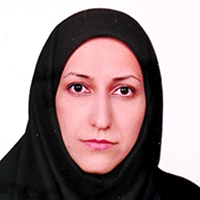Conversational repair strategies in 3 and 5 year old normal Persian-speaking children in Ahwaz, Iran
Author(s):
Abstract:
Background And Aim
The ability of conversational repair is a subset of pragmatic language. When the listener does not understand the speaker''s intention، and the speaker cannot find a way of repairing the conversation to make his/her massage clear، communication will fail. This study aims to examine and compare the conversational repair skill in two groups of three and five year old children، to determine different conversational repair strategies and compare these skills among these groups. Methods
One hundred and twenty Persian speaking children of three and five years of Ahwaz، Iran، were selected. The study tools were two series of pictures. During the retelling of the pictures the examiner created a situation to elicit a conversational repair strategy. Percentages of the usage of different kinds of conversational repair in each group were calculated and compared using student''s t-test. Results
The usage of repetition and inappropriate response is decreased in the group of five year olds compared to the three year olds، but cue-repair and repetition method is increased. The addition method has remained relatively constant. There was a significant difference between average percentage of using repetition (p=0. 04) and cue-repair (p=0. 001) of the two groups. The percentage of application of repetition method in three year olds and cue-term method in five year olds were significantly higher than other conversational repair strategies. Conclusion
With the increase in age and development of language skills the probability of using more complex and difficult strategies، like the cue-repair method، increases.Language:
Persian
Published:
Auditory and Vestibular Research, Volume:22 Issue: 1, 2013
Pages:
25 to 31
https://magiran.com/p1114533
سامانه نویسندگان
مقالات دیگری از این نویسنده (گان)
-
Comparing the vocabulary, grammatical, narrative, and phonological awareness skills among children with Hearing Loss and Normal Hearing and investigating the association between these language skills
Zahra Ghayoumi-Anaraki, Zahra Fathalizade, Milad Karimi, Parnia Pourmirzaei, Fatemeh Haresabadi, Toktam Maleki Shahmahmood*
Koomesh, -
Design and evaluation of validity of an electronic alternative and augmentative communication system for Persian-speaking children
Seyedeh Sepideh Seyedhosseini, Fatemeh Haresabadi*, Abbas Ebadi, Zahra Ghayoumi-Anaraki, Toktam Maleki Shahmahmood
Koomesh,



